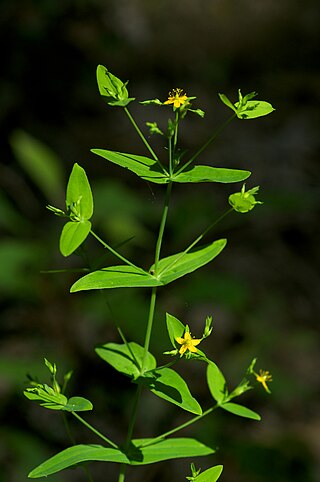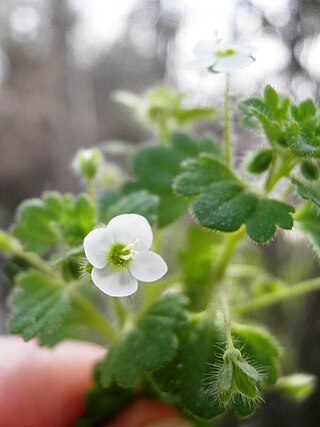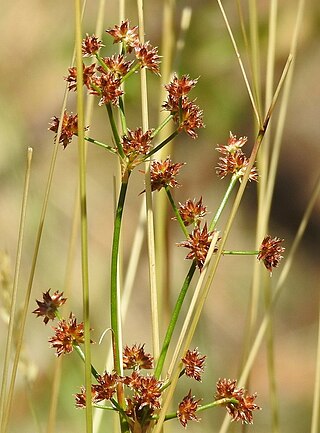
Asphodelus ramosus, the branched asphodel, is a perennial herbaceous plant in the order Asparagales. Similar in appearance to Asphodelus albus and particularly Asphodelus cerasiferus and Asphodelus aestivus, it may be distinguished by its highly branched stem and smaller fruits. There has been a lot of confusion over the nomenclature and taxonomy of the species, owing to its similarity to Asphodelus aestivus.

The stone pine, botanical name Pinus pinea, also known as the Italian stone pine, Mediterranean stone pine, umbrella pine and parasol pine, is a tree from the pine family (Pinaceae). The tree is native to the Mediterranean region, occurring in Southern Europe and the Levant. The species was introduced into North Africa millennia ago, and is also naturalized in the Canary Islands, South Africa and New South Wales.

Eryngium maritimum, the sea holly or sea eryngo, or sea eryngium, is a perennial species of flowering plant in the family Apiaceae and native to most European coastlines. It resembles a thistle in appearance because of its burr-shaped inflorescences. Despite its common name, it is not a true holly but an umbellifer.

Cyperus is a large genus of about 700 species of sedges, distributed throughout all continents in both tropical and temperate regions.

Pancratium maritimum, or sea daffodil, is a species of bulbous plant native to both sides of the Mediterranean region and Black Sea from Portugal, Morocco and the Canary Islands east to Turkey, Syria, Israel and the Caucasus. In the parts of its range on the south Bulgarian and north Turkish and Georgian coasts of Black Sea. It is also naturalized in southern California, Bermuda and the Azores.

Bellis annua, the annual daisy, is a small daisy species native to Mediterranean countries eastward to Iran.

Cyperus fuscus is a species of sedge known by the common name brown galingale, or brown flatsedge. This plant is native to much of Europe, Asia, and North Africa from England, Portugal and Morocco then towards east to China and Thailand. It is an introduced species in North America, where it is naturalized in widely scattered locations in the United States and Canada.

Hypericum mutilum is a species of St. John's wort known by the common name dwarf St. John's wort. It is native to parts of North America and is present in other parts as an introduced species. It is an annual or perennial herb taking a multibranched erect form up to about 60 centimeters tall. The oval green leaves are one or two centimeters long and are covered in tiny glands. The inflorescence is a compound cyme of tiny flowers. H. mutilum subsp. mutilum and subsp. boreale have a diploid number of 16, and H. mutilum subsp. boreale can have a diploid number of 18.

The flora of Turkey consists of more than 11,000 species of plants, as well as a poorly known number of fungi and algae. Around a third of Turkey's vascular plants are found only in the country. One reason there are so many of these endemics is because Anatolia is both mountainous and quite fragmented.

Lysimachia foemina is commonly known as blue pimpernel or poor man's weatherglass, and was formerly called Anagallis foemina. It is a low-growing annual herbaceous plant in the genus Lysimachia of the family Primulaceae. In a comparison of DNA sequences, L. foemina was shown to be most closely related to L. monelli. It had been thought by many to be closest to L. arvensis, and some authors had even included L. foemina as a subspecies of L. arvensis, as Anagallis arvensis subsp foemina. These three species were among several transferred from Anagallis to Lysimachia in a 2009 paper.
Cyperus cuspidatus, commonly known as the coastal plain flatsedge, is a sedge of the family Cyperaceae that is native to seasonally dry tropical areas of Africa, Asia, the Americas and Australia.
Cyperus nutans is a sedge of the family Cyperaceae that is native to Australia, China, India, Bangladesh, south-east Asia, Malaysia, India, and Indonesia.

Romulea columnae, the sand crocus, is a herbaceous perennial in the family Iridaceae. It is a small plant, with thin narrow leaves, and small scape which has small pink, pale purple or violet pointed flowers with darker veining and a gold or yellow throat. It is native to a wide area ranging from western Europe to the Mediterranean.

Lobostemon capitatus is a species belonging to the forget-me-not family. It is endemic to the Western Cape of South Africa, where it is found between Porterville and Bredasdorp.

Cyperus serotinus is a species of sedge that is native to parts of Europe and Asia.

Veronica cymbalaria, the pale speedwell, glandular speedwell or cymbal speedwell is a species of flowering plant in the Plantaginaceae (Plantain) family. It is native to countries surrounding the Mediterranean and a little further afield, and has been introduced to parts of the Americas and New Zealand.

Juncus heldreichianus is a large tufted species of rush in the family Juncaceae, formed of two subspecies.

Juncus fontanesii, also known as Desfontaines' rush, is a species of rush in the family Juncaceae.
Juncus littoralis is a species of rush in the family Juncaceae known as coastal rush; it has no subspecies.
Malva unguiculata, the bryony-leaved tree-mallow, is a very tall perennial tree-mallow with large pink flowers native to the East Mediterranean.

















